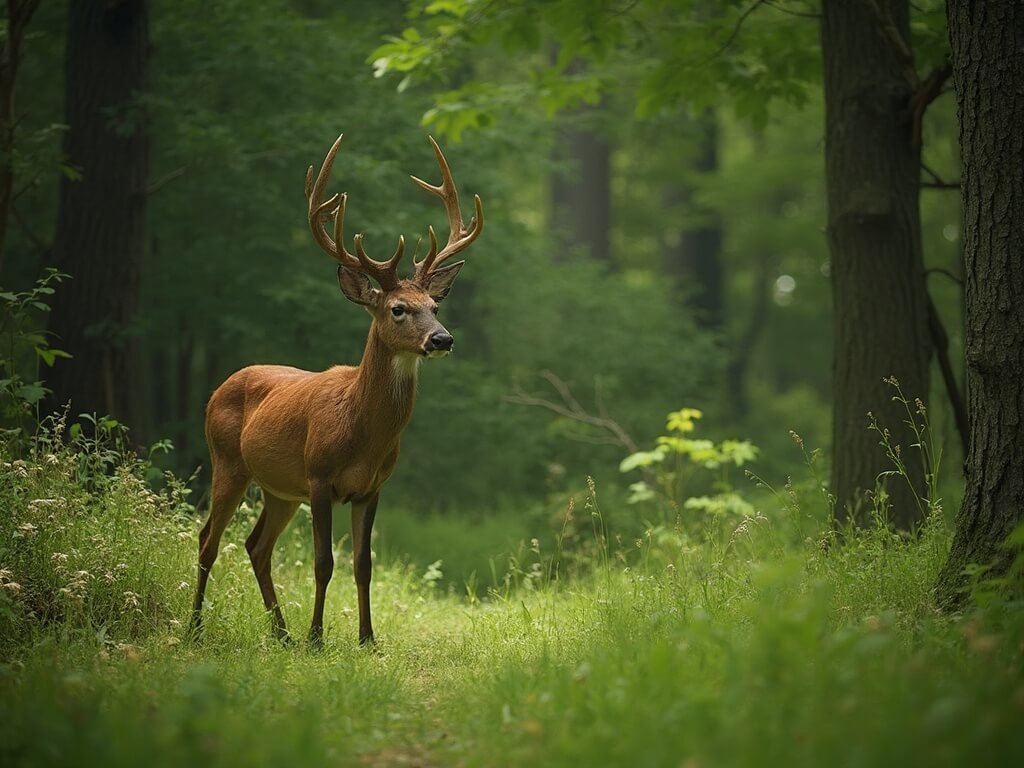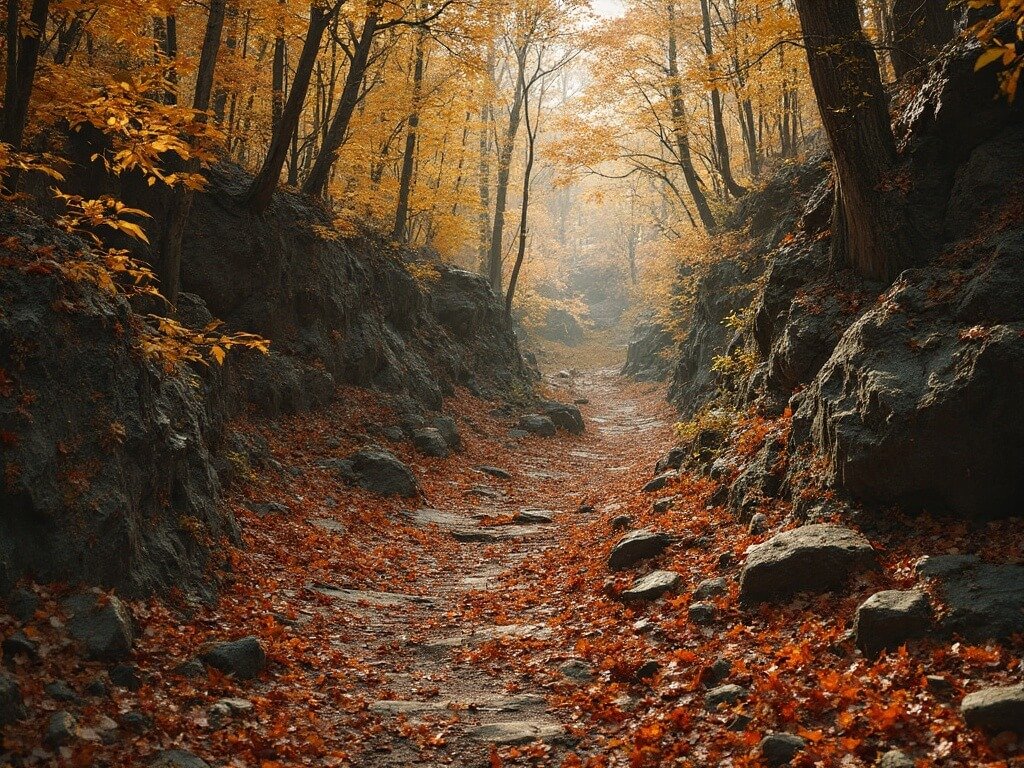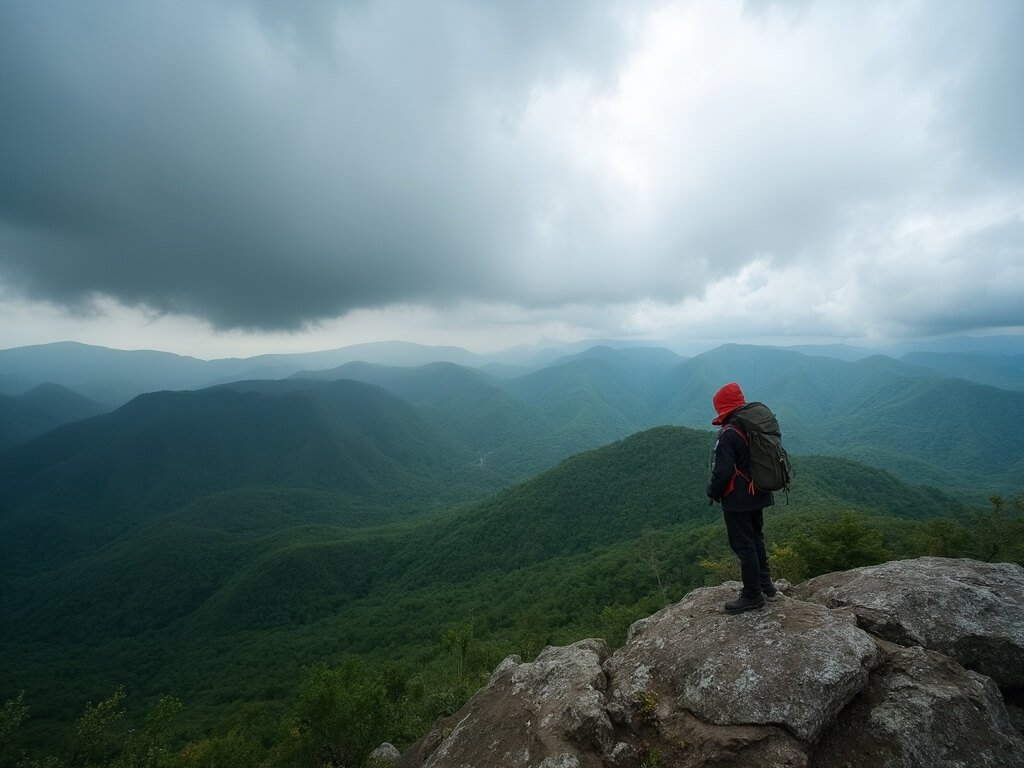Ever wondered how to transform an ordinary weekend into an epic adventure? The Appalachian Trail in Shenandoah National Park is your golden ticket.

The World’s Most Epic Walking Path: A Quick Insider’s Look
The Appalachian Trail isn’t just a hiking route. It’s a 2,180-mile monster stretching from Georgia to Maine, with Shenandoah National Park hosting a jaw-dropping 101-104 miles of pure hiking magic.
I’ve personally hiked chunks of this trail, and let me tell you, it’s not just a walk in the park. It’s a walk through one of America’s most stunning landscapes.
Why Shenandoah? Here’s the Insider Scoop
The trail here traces the Blue Ridge Mountains like a perfectly drawn line, often dancing alongside Skyline Drive. This isn’t just a hiking path – it’s a biodiversity hotspot that attracts day hikers, section hikers, and hardcore thru-hikers from everywhere.
Planning Your Epic Adventure: Access Points That Matter
Forget complicated navigation. You’ve got crystal-clear access points:
- Northern Gateway: Front Royal
- Southern Entry: Waynesboro
- Multiple Skyline Drive crossings with convenient parking
Pro Trailhead Secrets Most Hikers Don’t Know
Top trailheads that’ll make your hike legendary:
- Chester Gap (hidden gem)
- Matthews Arm (stunning views)
- Big Meadows (classic Shenandoah experience)
- Skyland (historic vibes)
- Thornton Gap
- Hawksbill Gap
Permits & Regulations: Keep It Simple
Hiking bureaucracy can be a nightmare. Here’s the straightforward truth:
- Day hiking? Zero permit needed
- Backpackers: Free self-registration required
- Overnight camping options:
- Backcountry sites
- Official campgrounds
- Designated shelters
Timing Is Everything: When to Hit the Trail
Each season brings its own magic:
- Spring (April-May): Wildflower paradise, moderate temps
- Summer (June-August): Lush green scenery, but humid
- Fall (September-October): Mind-blowing foliage, cooler hiking
- Winter (November-March): Quiet trails, potential snow adventures
My Unexpected Bear Encounter
During one autumn hike, I rounded a bend and locked eyes with a black bear about 30 yards away. Heart racing, I remembered the cardinal rule: stay calm, make noise, back away slowly.
The bear? Completely uninterested. Just munching berries, couldn’t care less about my presence. But that moment taught me wilderness respect isn’t just a phrase – it’s survival.
Trail Terrain: What Your Legs Are In For
Shenandoah’s section is hiking’s version of a moderate workout:
- Elevation range: 1,900′ to 3,850′
- Mostly gradual ascents/descents
- Well-maintained paths
- Occasional rocky sections to keep things interesting
Wildlife Watch: Nature’s Live Show
Expect surprise appearances from:
- White-tailed deer (everywhere)
- Black bears (rare but possible)
- Copperhead snakes (stay alert)
- Diverse bird species
As the morning mist lifts and the trail winds through ancient forests, you’ll realize this isn’t just a hike – it’s an immersion into one of America’s most breathtaking wilderness corridors.
The next stretch of trail beckons, promising more discoveries just beyond the next ridge.
Explore More:
Safety Ninja: Your Wilderness Defense Strategy
Wildlife isn’t just scenery – it’s a dynamic ecosystem where you’re a temporary visitor.
Black bear encounters aren’t horror movie scenarios. They’re calculated interactions requiring smart decisions.
Bear Safety Pro Tips:
- Make noise while hiking (prevents surprise encounters)
- Store food in bear-resistant containers
- Never approach or feed wildlife
- Carry bear spray as backup protection
Snake Survival: Don’t Become a Cautionary Tale
Copperheads love Shenandoah’s rocky terrain. My closest encounter happened near a fallen log – a perfect camouflage zone.
Copperhead Defense Checklist:
- Stay on marked trails
- Wear sturdy hiking boots
- Watch where you step
- Learn snake identification
- Carry a basic first aid kit
Weather Warriors: Prepare or Suffer
Mountain weather changes faster than social media trends.
Shenandoah’s Micro-Climate Secrets:
- Temperatures can drop 20 degrees between valley and ridge
- Afternoon thunderstorms are common
- Humidity can make hiking feel exponentially harder
- Always pack layers
- Waterproof gear is non-negotiable
Gear That Separates Hikers from Survivors
Essential Hiking Kit:
Day Hike Minimum:
- 2-3 liters water
- High-protein snacks
- Navigation tools
- First aid kit
- Emergency shelter
- Communication device
Overnight Expedition Additions:
- Lightweight tent
- Sleeping bag rated for expected temperatures
- Cooking equipment
- Water filtration system
- Emergency communication device
- Extra food/emergency rations
The Hidden Trail Community: Your Unexpected Family
Thru-hikers aren’t just travelers – they’re a nomadic tribe with unwritten rules and profound camaraderie.
Trail Magic Moments:
- Unexpected food/supply shares
- Shelter discussions
- Navigation tips
- Emergency assistance
- Cultural exchange beyond typical social boundaries
Conservation: You’re Not Just Hiking – You’re Protecting
Every footstep contributes to trail maintenance and environmental preservation.
Sustainable Hiking Principles:
- Pack out ALL trash
- Stay on designated trails
- Minimize campfire impact
- Respect wildlife habitats
- Support local trail maintenance organizations
Learn more about backcountry planning for Shenandoah National Park and how to prepare for safe and sustainable travel.
The Shenandoah Promise
This trail isn’t just a path through wilderness. It’s a transformative journey connecting you with America’s most magnificent natural corridor.
Your Appalachian Trail adventure starts with preparation, respect, and an insatiable curiosity for exploration.
The mountains are calling. Are you ready to answer?
Need more trail inspiration for your cabin lifestyle? Explore our related content:
- Little Cabin Décor
- Little Cabin Living Room
- Little Cabin Christmas
- Cabin Interiors
- Small Cabin Interior Ideas











